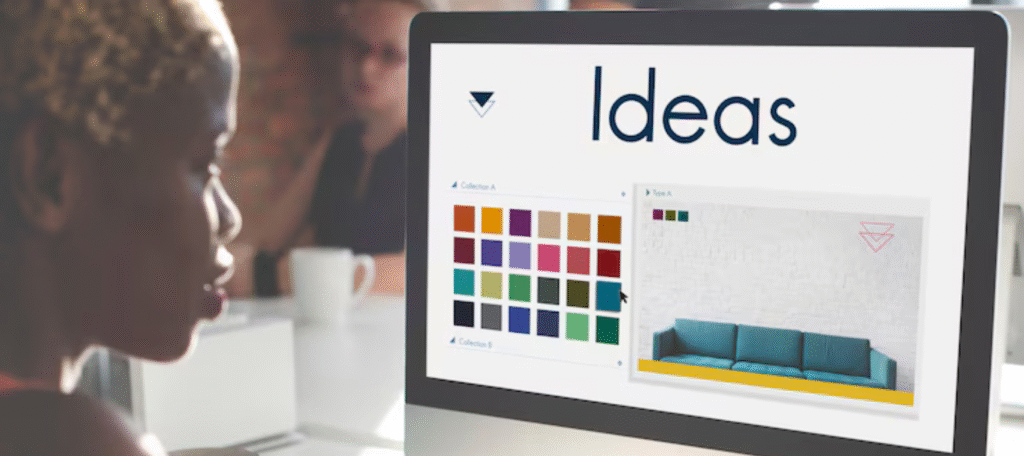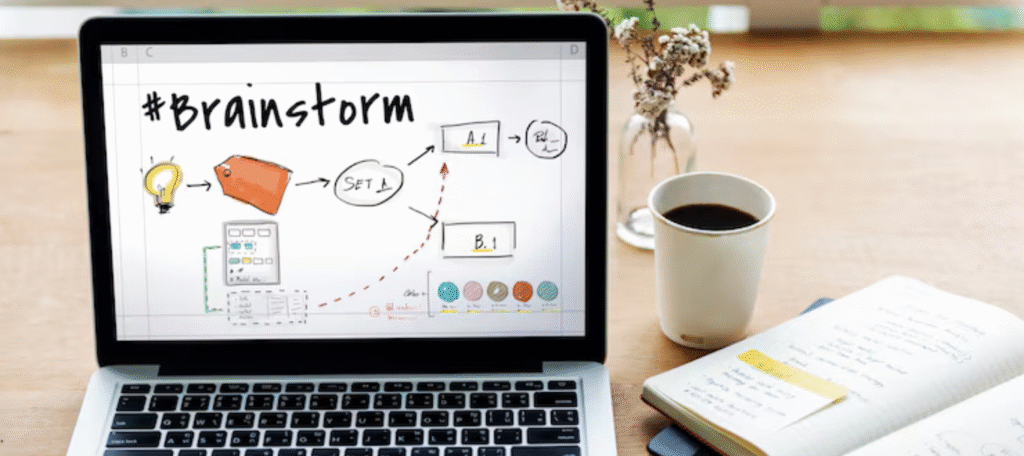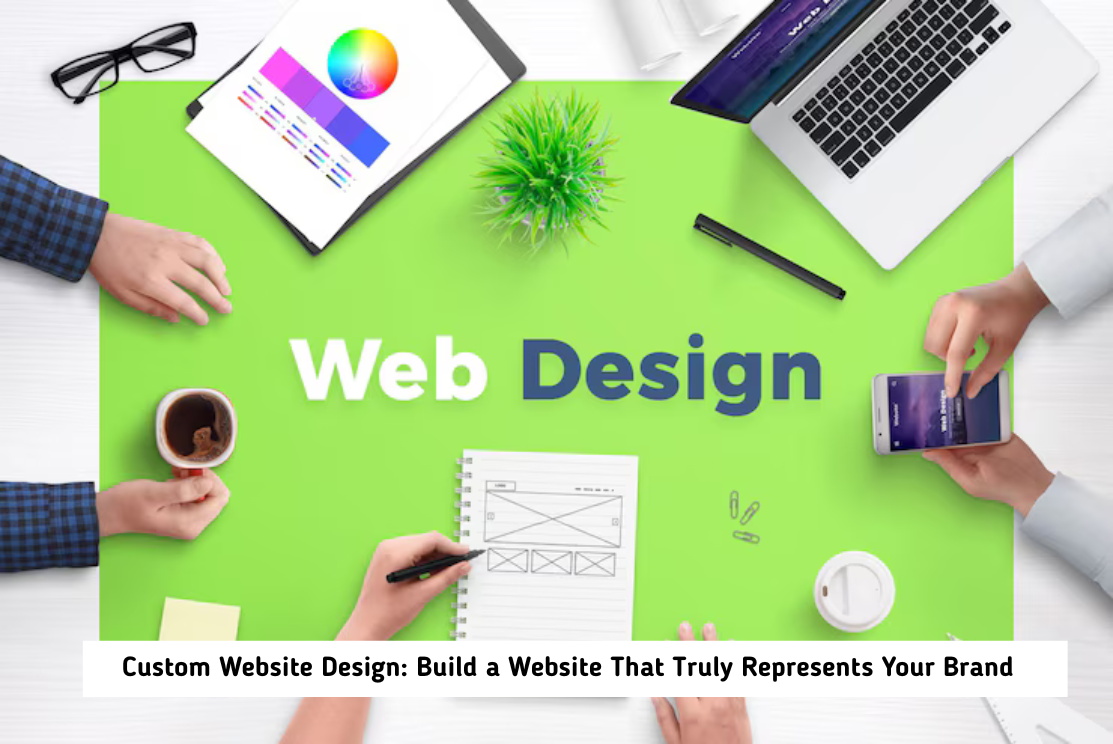In today’s digital-first world, your website is often the first impression your customer gets of your business. It’s not just a digital brochure; it’s your 24/7 salesperson, your brand ambassador, and a critical tool for lead generation and conversions. When it comes to designing a website that performs well and represents your business accurately, a custom website design is often the best choice.
Unlike template-based designs that limit your creativity and functionality, custom websites are built from scratch to align with your specific goals, brand identity, and user needs. In this blog, we’ll explore what custom website design means, its major benefits, and why it’s a powerful investment for growing brands.
What is custom website design?
Custom website design refers to the process of creating a website that’s completely tailored to your business starting from a blank canvas. Everything from layout, colors, and features to user experience is crafted around your specific objectives. It’s not based on a pre-made theme or template; instead, it’s developed by professionals to ensure uniqueness, scalability, and optimal performance.
This approach allows for full control over your website’s appearance and functionality, ensuring that it reflects your brand accurately and provides the best possible experience for your visitors.

Why Choose Custom Website Design?
- Unique Brand Identity Your brand is unique, and your website should reflect that. Custom design lets you align your site’s look and feel with your branding elements such as colors, logos, typography, and messaging. This helps in establishing a consistent brand image across all platforms and builds recognition and trust.
- Optimized User Experience Custom websites are designed with your audience in mind. From intuitive navigation to fast loading speeds and mobile responsiveness, every element is optimized to make sure your visitors have a smooth and engaging experience. This not only improves user satisfaction but also boosts conversions.
- SEO-Friendly Architecture Custom websites are built with clean code and optimized structures that improve your chances of ranking higher in search engines. Developers can ensure proper heading structures, image optimization, metadata implementation, and fast-loading pages—critical factors for SEO success.
- Advanced Functionality With custom development, you can incorporate any feature your business requires. Whether it’s a custom booking system, dynamic content display, user dashboards, or third-party integrations, a custom website gives you the freedom to include anything that improves functionality and user engagement.
- Scalability for Future Growth As your business grows, your website needs may evolve. A custom-built website makes it easier to scale by adding new pages, sections, or features without limitations. You’re not bound by the restrictions of a theme or plugin.
- Better Security Custom websites offer improved security because they are built using best practices and avoid common vulnerabilities found in mass-produced templates. Developers can also implement tailored security features and regularly update the code to maintain protection.
Who Should Consider Custom Website Design?
While a custom website is ideal for almost any business, it’s especially valuable for:
- Growing startups that want to make a bold first impression
- Established companies looking to upgrade their digital presence
- eCommerce businesses that need custom features and seamless user experience
- Agencies and service providers who rely on conversions and lead generation
- Organizations with specific regulatory or technical requirements
If your business depends on online credibility, functionality, and brand perception, a custom website is not just a luxury; it’s a necessity.
The Process of Custom Website Design
A well-structured custom design process involves several strategic steps. Here’s a quick overview of what goes into building a custom website:
- Discovery & Planning: The project starts with understanding your business goals, target audience, competitors, and technical needs. During this phase, a sitemap is created to plan the structure and user flow of the website.
- Wireframing & User Experience (UX): Before any visual design begins, wireframes are developed to outline the basic layout and functionality. This helps in defining how users will interact with different pages and features.
- Visual Design: Once wireframes are approved, the design team creates mockups that reflect your brand’s style and personality. This includes choosing colors, typography, imagery, and graphic elements.
- Development: With designs finalized, developers code the site using modern technologies that support performance, security, and flexibility. CMS integration (like WordPress or Webflow) may also be added to allow you to manage your content.
- Testing & Quality Assurance: Before launch, your site is tested for speed, compatibility across devices and browsers, responsiveness, and functionality. Any bugs or issues are resolved during this phase.
- Launch & Optimization: Once everything is in place, your website is launched. But that’s not the end; performance tracking, SEO optimization, and future enhancements are ongoing efforts.

How Much Does a Custom Website Cost?
The cost of a custom website depends on several factors, such as the number of pages, design complexity, required features, and platform. A basic custom website may start around $2,000–$5,000, while more complex business or eCommerce sites can range from $10,000 to $50,000 or more.
While the upfront investment is higher than template-based options, the return is far greater in terms of brand value, performance, and long-term flexibility.
Common Mistakes to Avoid
- Choosing Style Over Strategy: A beautiful website is important, but if it doesn’t convert or serve your business goals, it fails. Always prioritize user experience and business strategy in the design process.
- Ignoring Mobile Users: Mobile traffic often makes up more than half of your total visitors. If your custom site isn’t responsive, you risk losing potential customers.
- Not Thinking Long-Term: Build a site that can grow with your business. Short-term solutions may cost less initially but lead to expensive redesigns later.
- Lack of SEO Planning: Even the best-designed website won’t perform well if it’s not optimized for search engines. Work with developers who understand both design and SEO.

